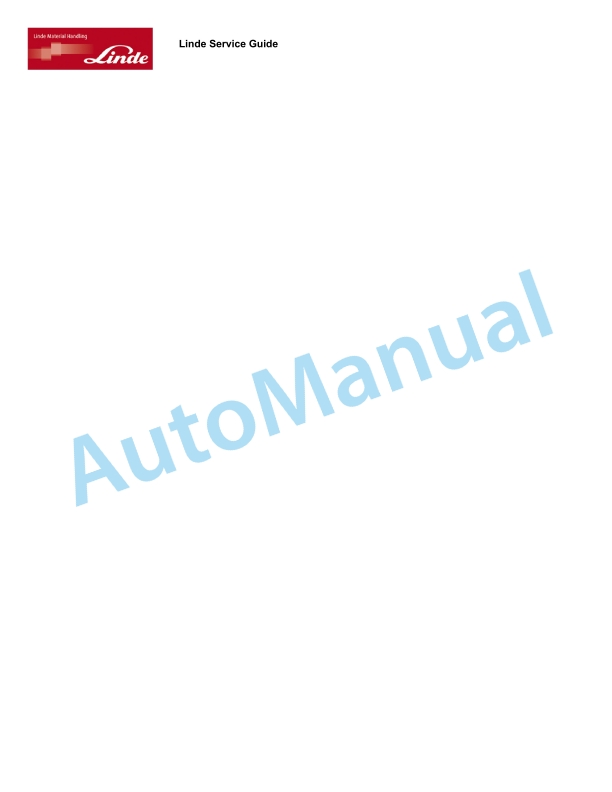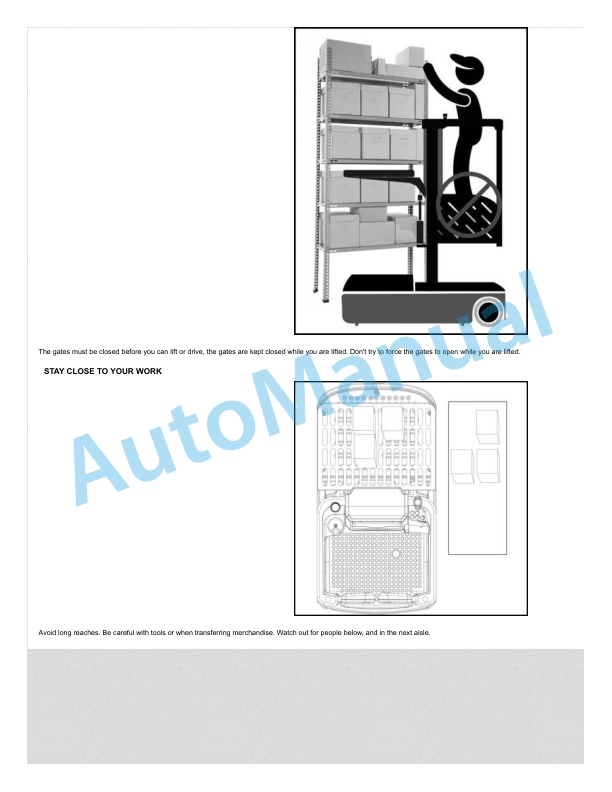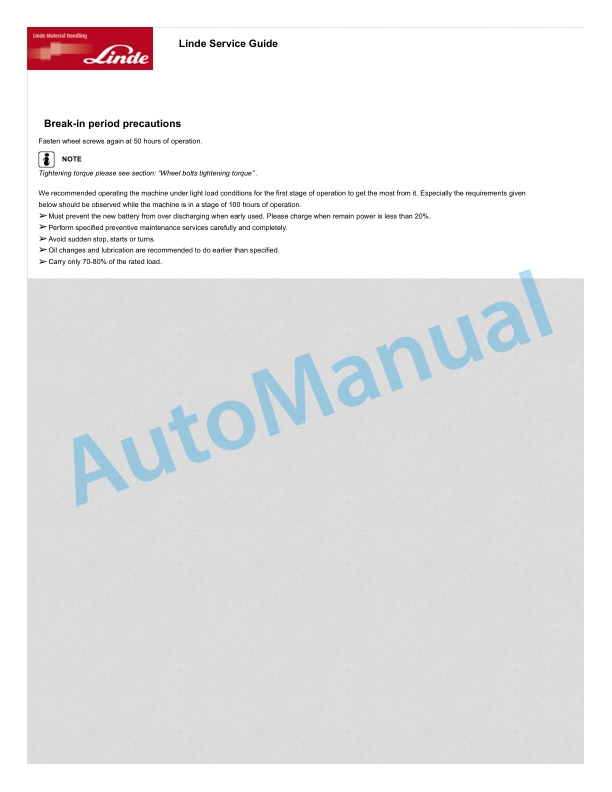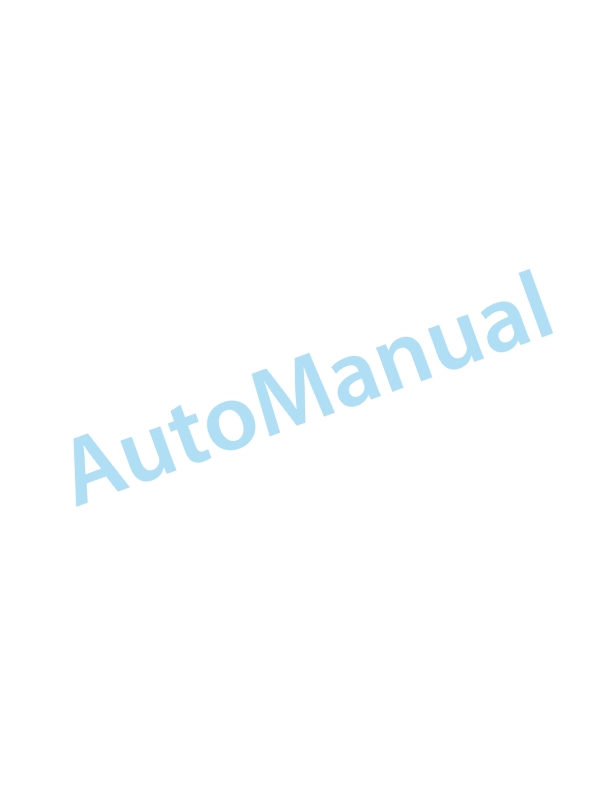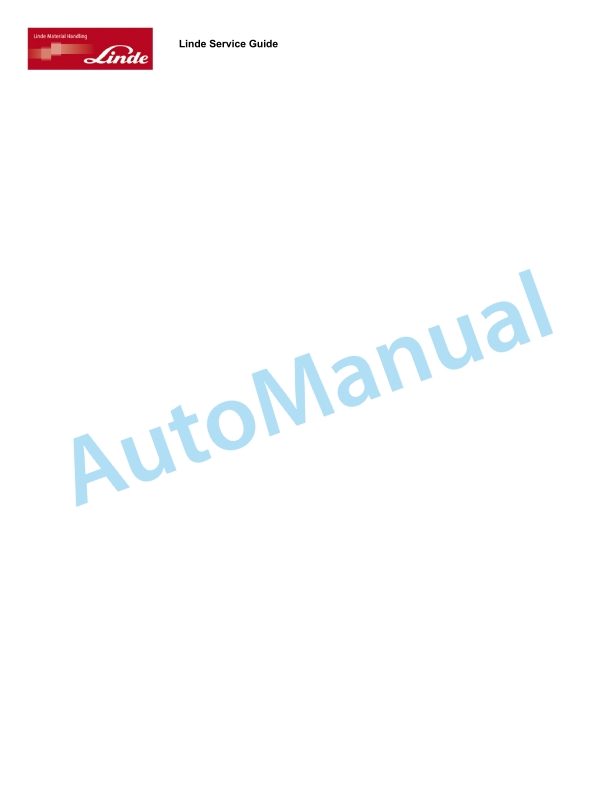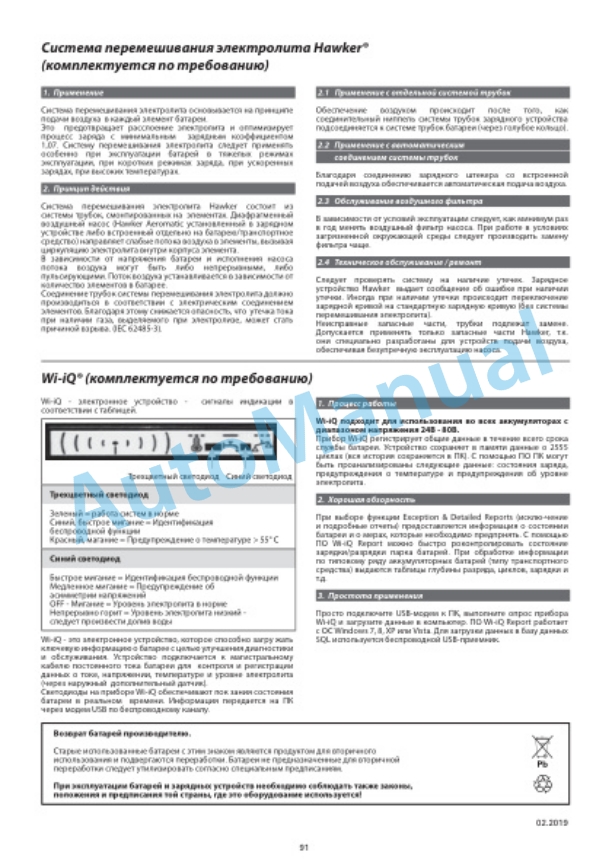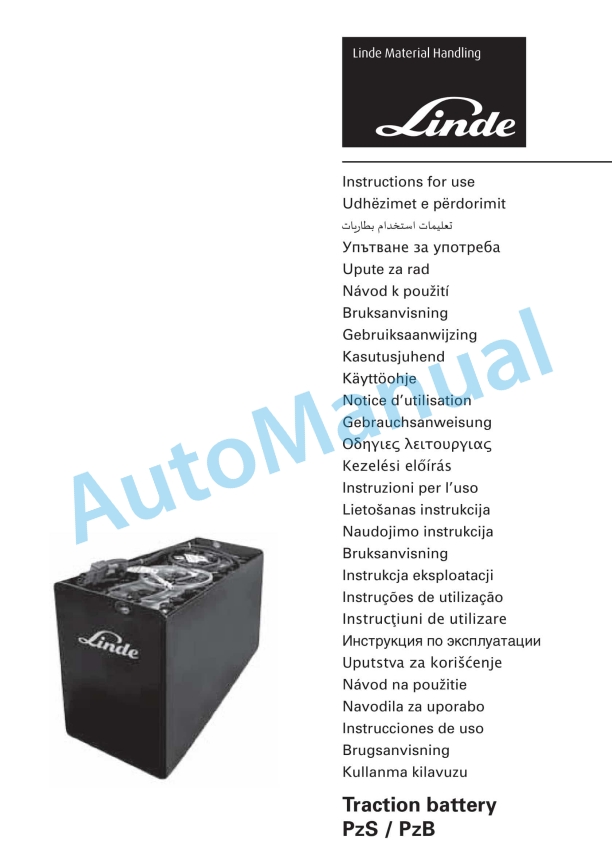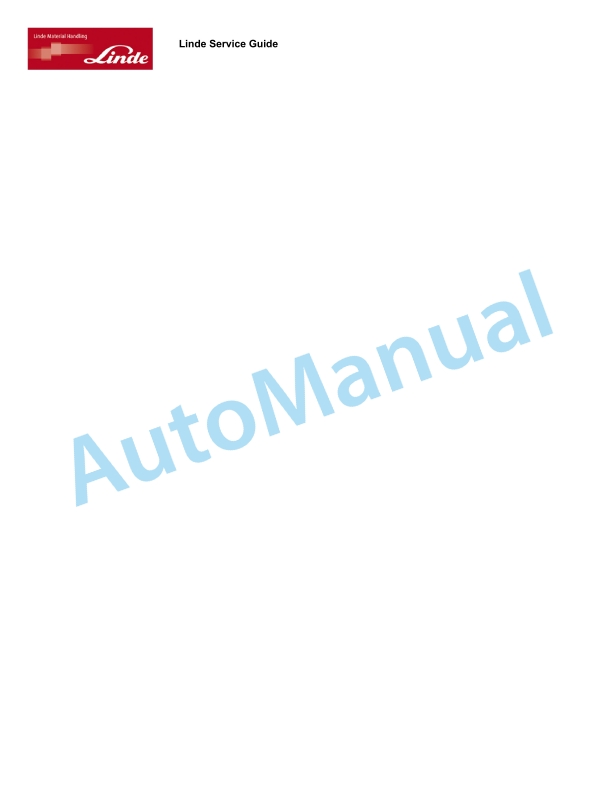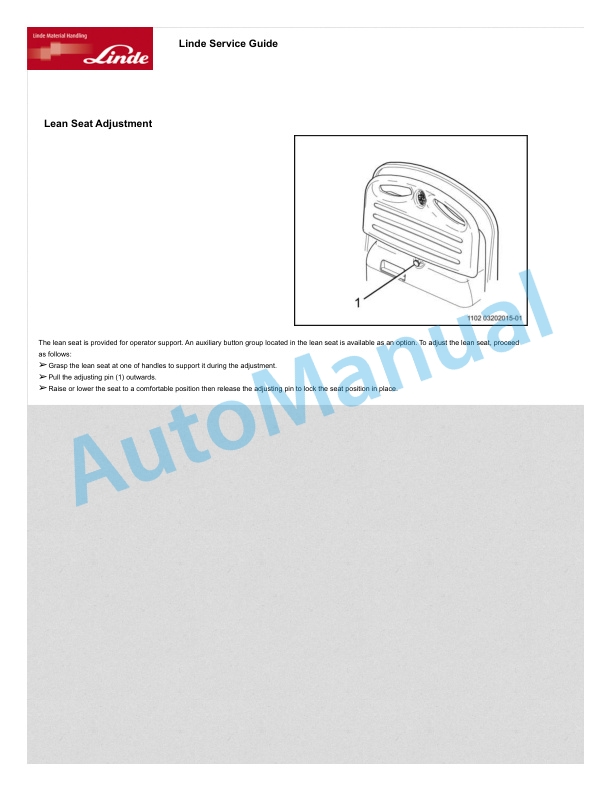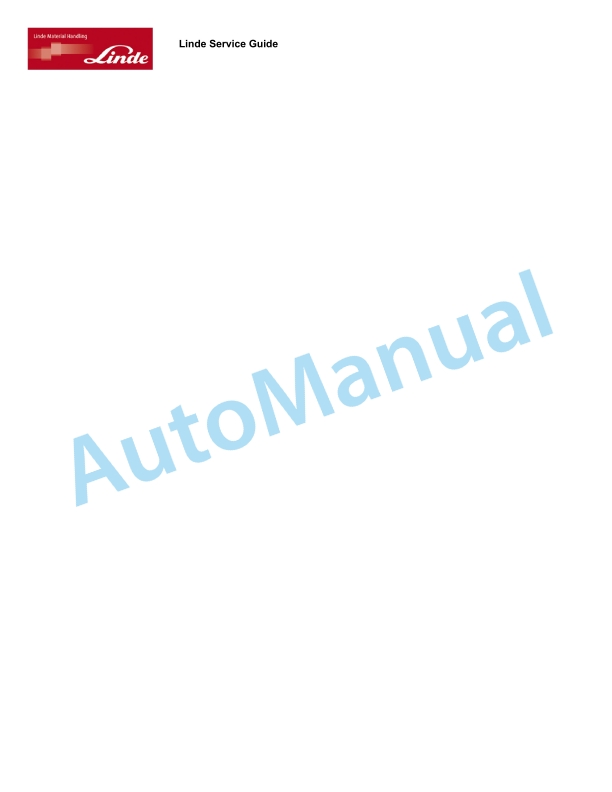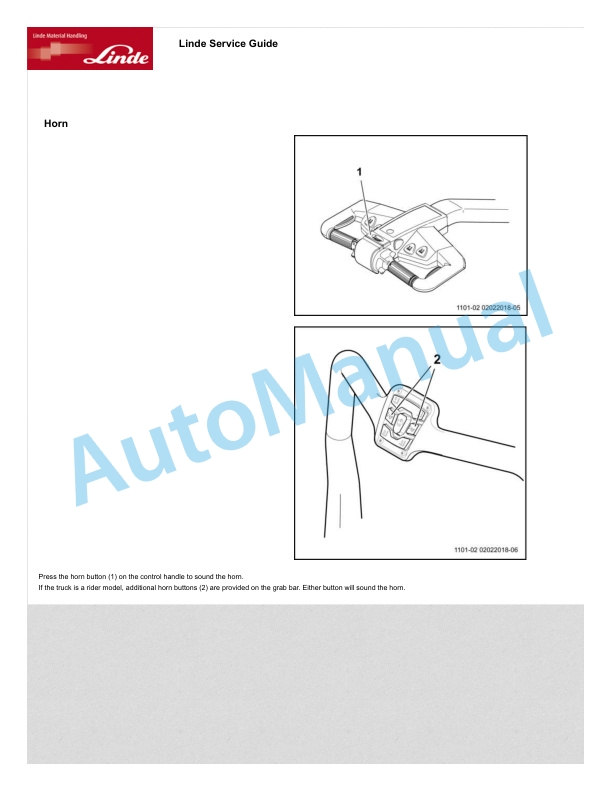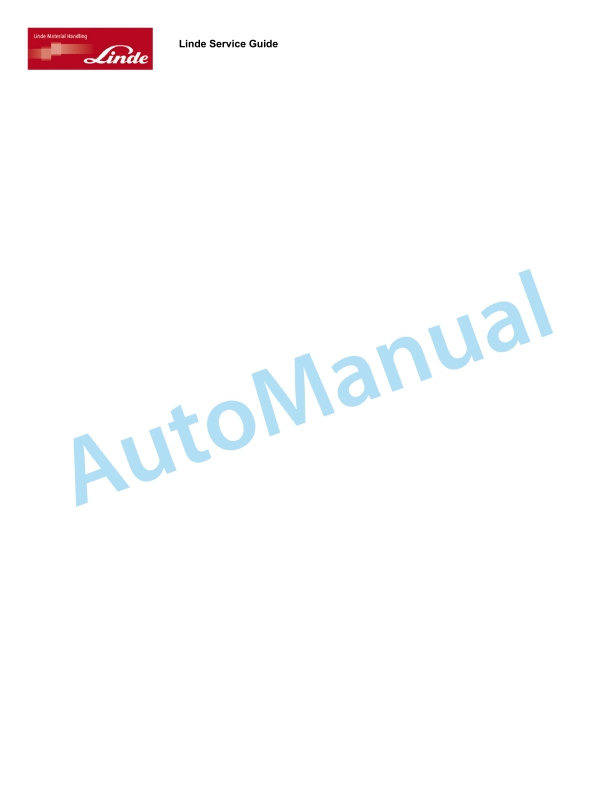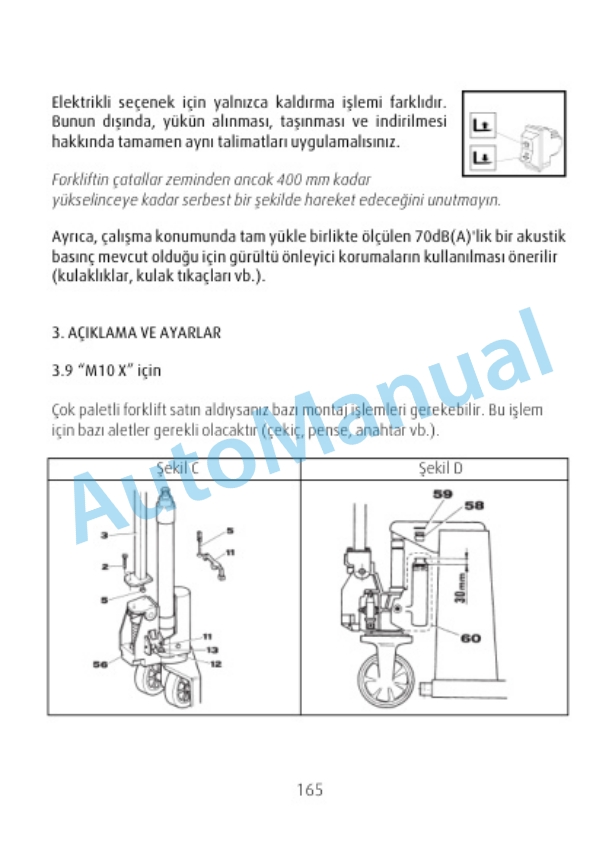Linde 8905-01 – MV01 Operating Instructions SN CT8905V00001 and up
$20.00
- Type Of Manual: Operating Instructions
- Manual ID: SN CT8905V00001 and up
- Format: PDF
- Size: 31.6MB
- Number of Pages: 241
- Serial Number:
SN CT8905V00001 and up
Category: Linde Operator Manual PDF
-
Model List:
- MV01
- 1. Multi function vehicleMV01EMEA
- 1.1. Table of content
- 1.2. Introduction
- 1.2.1. Introduction
- 1.2.2. General information
- 1.2.3. Conformity marking
- 1.2.4. Declaration that reflects the content of the declaration of conformity
- 1.2.5. Nameplate
- 1.2.6. Intended use
- 1.2.7. Hazard assessment
- 1.2.8. Impermissible use
- 1.2.9. Additional information
- 1.2.10. Symbols used
- 1.2.11. Disposing of components and batteries
- 1.2.12. Description of use and climatic conditions
- 1.2.13. Technical description
- 1.3. Safety
- 1.3.1. Safety guidelines
- 1.3.2. Residual risks
- 1.3.3. Stability
- 1.3.4. EMC Electromagnetic compatibility
- 1.3.5. Operating company
- 1.3.6. Drivers
- 1.3.7. Competent person
- 1.3.8. Regulations
- 1.3.9. Handling consumables
- 1.3.10. Safety regulations for operating mode drive
- 1.3.11. Battery Safety
- 1.3.12. Platform safety
- 1.3.13. Be a safe operator
- 1.4. Overview
- 1.4.1. General view
- 1.4.2. Control elements
- 1.4.3. Data plates and safety labels
- 1.4.4. Capacity rating plate
- 1.5. Operation
- 1.5.1. Safety Regulations for the Operation of truck
- 1.5.2. Checks before first use
- 1.5.3. Breakin period precautions
- 1.5.4. Daily checks before use
- 1.5.5. Daily check of the micro switch setting
- 1.5.6. Drive operations
- 1.5.6.1. Instructions
- 1.5.6.2. Defining directions
- 1.5.6.3. To prepare the multi function vehicle for operation
- 1.5.6.4. Entry and exit
- 1.5.6.5. Braking
- 1.5.6.6. Lifting, Lowering
- 1.5.7. Emergency Lowering
- 1.5.8. Picking up a load
- 1.5.9. Transporting loads
- 1.5.10. Parking the multi function vehicle securely
- 1.5.11. Transporting the truck
- 1.5.12. Operating the multi function vehicle without its own drive system
- 1.5.13. Lithium battery
- 1.5.13.1. Safety regulations for handling lithium batteries
- 1.5.13.2. Charging the battery
- 1.5.13.3. Battery removal and installation
- 1.5.13.4. Battery maintenance
- 1.5.13.5. Battery Disposal
- 1.5.14. Lithium battery appendix
- 1.5.14.1. Information on the conformity of lithiumion batteries
- 1.5.14.2. It is necessary to respect the following guidelines
- 1.5.14.3. Intended use
- 1.5.14.4. Reasonably foreseeable misuse
- 1.5.14.5. Accessories
- 1.5.14.6. BMS (Battery Management System)
- 1.5.14.7. Identification plates
- 1.5.14.8. Dangers of faulty or scrapped batteries
- 1.5.14.9. Transportation
- 1.5.14.10. Instructions for disposal
- 1.5.14.11. Storage
- 1.5.14.12. Common Problems and Solutions
- 1.5.14.13. Maintenance
- 1.6. Maintenance
- 1.6.1. Operational safety and environmental protection
- 1.6.2. Maintenance safety regulations
- 1.6.3. Servicing and inspection
- 1.6.4. Service plan table
- 1.6.5. Ordering spare parts and wearing parts
- 1.6.6. Maintenance work
- 1.6.6.1. Lubrication points
- 1.6.6.2. Prepare the truck for maintenance and repairs
- 1.6.6.3. Open the cover
- 1.6.6.4. Replacing the drive wheel
- 1.6.6.5. Wheel bolts tightening torque
- 1.6.6.6. Check the hydraulic oil level
- 1.6.6.7. How to add grease
- 1.6.6.8. Changing electrical fuses
- 1.6.6.9. Recommissioning
- 1.6.6.10. Check lowering cutoff
- 1.6.7. Decommissioning the truck
- 1.6.8. Restoring the truck to operation after decommissioning
- 1.6.9. Safety checks to be performed at regular intervals and following any unusual incidents
- 1.6.10. Final decommissioning, disposal
- 1.6.11. Tire replacement
- 1.6.12. Troubleshooting
- 1.7. Technical data
- 1.7.1. Technical datasheet
- 1.7.2. Ecodesign requirements for electric motors and variable speed drives
- 2. Multi function vehicleMV01
- 2.1. Table of content
- 2.2. Introduction
- 2.2.1. Introduction
- 2.2.2. General information
- 2.2.3. Conformity marking
- 2.2.4. Declaration that reflects the content of the declaration of conformity
- 2.2.5. Nameplate
- 2.2.6. Intended use
- 2.2.7. Improper use
- 2.2.8. Hazard assessment
- 2.2.9. Impermissible use
- 2.2.10. Intended use
- 2.2.11. Symbols used
- 2.2.12. Disposing of components and batteries
- 2.2.13. Description of use and climatic conditions
- 2.2.14. Technical description
- 2.3. Safety
- 2.3.1. Safety guidelines
- 2.3.2. Residual risks
- 2.3.3. Stability
- 2.3.4. Handling consumables
- 2.3.5. EMC Electromagnetic compatibility
- 2.3.6. Operating company
- 2.3.7. Drivers
- 2.3.8. Competent person
- 2.3.9. Regulations
- 2.3.10. Safety regulations for operating mode drive
- 2.3.11. Battery Safety
- 2.3.12. Platform safety
- 2.3.13. Be a safe operator
- 2.4. Overview
- 2.4.1. General view
- 2.4.2. Control elements
- 2.4.3. Display unit
- 2.4.4. Data plates and safety labels
- 2.4.5. Capacity rating plate
- 2.5. Operation
- 2.5.1. Safety Regulations for the Operation of truck
- 2.5.2. Checks before first use
- 2.5.3. Breakin period precautions
- 2.5.4. Daily checks before use
- 2.5.5. Drive operations
- 2.5.5.1. Instructions
- 2.5.5.2. To prepare the multi function vehicle for operation
- 2.5.5.3. Defining directions
- 2.5.5.4. Driving, Steering
- 2.5.5.5. Braking
- 2.5.6. Lifting, Lowering
- 2.5.7. Emergency lowering
- 2.5.8. Picking up a load
- 2.5.9. Transporting loads
- 2.5.10. Parking the multi function vehicle securely
- 2.5.11. Transporting the truck
- 2.5.12. Hoisting the truck
- 2.5.13. Operating the multi function vehicle without its own drive system
- 2.5.14. Battery use and Maintenance
- 2.5.14.1. Information on the conformity of lithiumion batteries
- 2.5.14.2. Safety regulations for handling lithium batteries
- 2.5.14.3. It is necessary to respect the following guidelines
- 2.5.14.4. Reasonably foreseeable misuse
- 2.5.14.5. Accessories
- 2.5.14.6. BMS (Battery Management System)
- 2.5.14.7. Intended use
- 2.5.14.8. Dangers of faulty or scrapped batteries
- 2.5.14.9. Transportation
- 2.5.14.10. Disposal instructions for lithiumion batteries
- 2.5.14.11. Storage
- 2.5.14.12. Maintenance
- 2.5.14.13. Battery type and dimension
- 2.5.14.14. Identification plates
- 2.5.14.15. Charging the battery
- 2.5.14.16. Battery removal and installation
- 2.5.14.17. Battery maintenance
- 2.5.14.18. Battery Disposal
- 2.6. Maintenance
- 2.6.1. Operational safety and environmental protection
- 2.6.2. Maintenance safety regulations
- 2.6.3. Servicing and inspection
- 2.6.4. hour service plan
- 2.6.5. hour service plan
- 2.6.6. Maintenance work
- 2.6.6.1. Lubrication points
- 2.6.6.2. Prepare the vehicle for maintenance and repairs
- 2.6.6.3. Open the cover
- 2.6.6.4. Replacing the drive wheel
- 2.6.6.5. Wheel bolts tightening torque
- 2.6.6.6. Check the hydraulic oil level
- 2.6.6.7. How to add grease
- 2.6.6.8. Changing electrical fuses
- 2.6.6.9. Recommissioning
- 2.6.7. Decommissioning the truck
- 2.6.8. Restoring the truck to operation after decommissioning
- 2.6.9. Safety checks to be performed at regular intervals and followingany unusual incidents
- 2.6.10. Final decommissioning, disposal
- 2.6.11. Tire replacement
- 2.6.12. Troubleshooting
- 2.7. Technical data
- 2.7.1. Technical datasheet
Rate this product
You may also like
Linde Operator Manual PDF
Linde 1120-01 – R-matic, R10, R12, R14, R16, R20, R25 Operating Instructions SN 10.12 and up
$20.00
Linde Operator Manual PDF
Linde 1110-01 – V08-01, V08-02 Operating Instructions SN 11.09 and up SN up to W41110V00528
$20.00
Linde Operator Manual PDF
Linde 1102-01 – ECR27, ECR36 Production site LMH-NA Operating Instructions
$20.00
Linde Operator Manual PDF
$20.00

